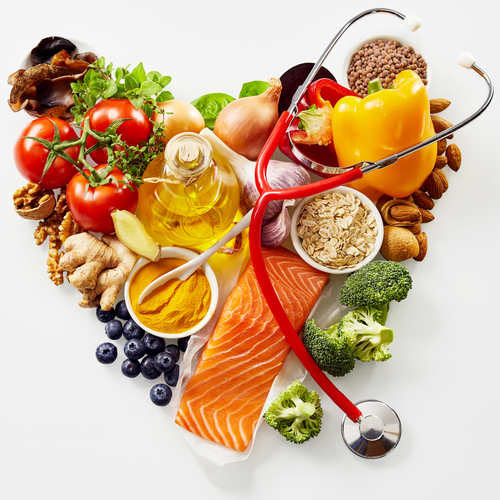Cardiovascular disease is still the leading cause of death across the world[1], and is now killing more people than ever before.
Coronary heart disease (when the arteries which supply the heart muscle with blood become blocked) was the single biggest killer of women worldwide in 2019[2]. Rates of heart disease fatalities are increasing among women in midlife[3] and it now kills a larger proportion of women over 55 than men.
These statistics might sound frightening, but there’s a lot we can do to improve our heart health. Our hearts sit at the centre of our cardiovascular system and are incredibly responsive to lifestyle changes. Simple tweaks like more movement, better nutrition and reduced stress – all of which can be found via Goldster classes – make a huge difference.
So, whether your Valentine’s will be a date night, Galentine’s or a solo treat remember to heart your heart!
Six Tips for Heart Health this Valentine’s Day:
- CULTIVATE OPTIMISM
Cultivate optimism for a happy heart! It might not seem obvious, but multiple studies have shown that a positive outlook[4], and a sense of optimism correlate with a lower risk of heart disease. Negative emotions trigger a stress response. With a positive outlook, we’re more likely to use healthy coping mechanisms and look after our health in other ways too.
We can train our brains to be objective about negative thoughts. They’re just thoughts – they’re not ‘us’. We can decide whether to believe them. Catching a negative or distressing thought, thanking our mind for worrying and keeping us safe, helps put stressful thoughts into perspective.
- POWER UP ON POTASSIUM
Research published in summer 2022 showed that a diet high in potassium can help lower blood pressure and thus protect women’s hearts. A large-scale cohort study tracked the diets of women, with an average age of 58, and found that higher potassium intake correlated with lower blood pressure[5].

Foods high in potassium include:
- Banana
- Beans, peas and lentils
- Seafood
- Sweet potato
- GO NUTS
Walnuts, pistachios, pine nuts, pecans, macadamias, hazelnuts, Brazil nuts and almonds have all been linked to lower LDL cholesterol and triglycerides. Walnuts have also been linked to better blood wall function. The experts recommend around 40g – a good handful – of nuts a day to reap the benefits. Research published last month[6] found that eating tree nuts increased levels of the amino acid L-tryptophan, which has been linked to lower risk of heart disease. It’s also converted in the body to serotonin, the so-called ‘happiness hormone’.
- STAY KISSABLE!
Research by a Japanese university[7], published late last year, linked periodontitis, an inflammatory gum disease, to heart health issues. Untreated, periodontitis can cause dental issues from bad breath to bleeding and lost teeth. It’s linked to increased dementia risk as inflammation can travel from the mouth to the brain. And now it seems it can also travel to the heart. The researchers linked periodontitis to atrial fibrosis (a condition that causes an irregular and often abnormally fast heart rate), meaning that there could be a direct correlation between inflammation in the gums and inflammation in the heart. Make dental hygiene a priority with 2 minutes of brushing, followed by flossing or dental sticks, and regular trips to your dentist to stay kissable, and protect heart health!
- TAKE A WALK ON DATE NIGHT
Date night doesn’t have to mean snuggling on the sofa. Research published at Christmas in the journal Circulation[8]found that people over 60 who walked between 6000 and 9000 steps a day had up to 50% reduced risk of a heart attack or stroke compared to those who walked 2000 steps a day. And the risk got progressively lower the more they walked, across a six-year period. So plan a good long walk on February 14th, either with a loved one, friends or by yourself.

- HUG FOR YOUR HEART!
Hug your partner, children, gals, or yourself – hugging has been linked to better heart health. A simple study[9] divided participants into two groups. One group held hands with their partner for 10 minutes, followed by a 20-second hug. The other group sat in silence for 10 minutes and 20 seconds in total. The first group had greater reductions in blood pressure levels and heart rate. And if you’re doing Valentine’s solo, you can still hug! Use a technique known as havening, which is simple and comforting. Wrap your arms around your body, resting each hand just above the bicep of the opposite arm. Then visualise the kind of hug you want – gentle, strong, soothing – and hug away! Give yourself a good squeeze and rub your hands up and down your upper arms. 20 seconds is enough to make a difference.
ABOUT SUSAN
Susan Saunders is a health coach and author. As a coach, she specialises in helping post-menopausal women to age well and reduce dementia risk. She’s passionate about helping people to create healthy longevity in their own lives. She believes we can all change the way we age, and build better brain health.
She’s co-author of the book and blog The Age-Well Project, and author of The Age-Well Plan, a six-week programme to kickstart a longer, healthier, happier life. Her new book, The Power Decade: How to Thrive After Menopause will be published by Headline on April 20th. Susan teaches weekly classes on Goldster about ageing well, reducing stress and dementia prevention.





